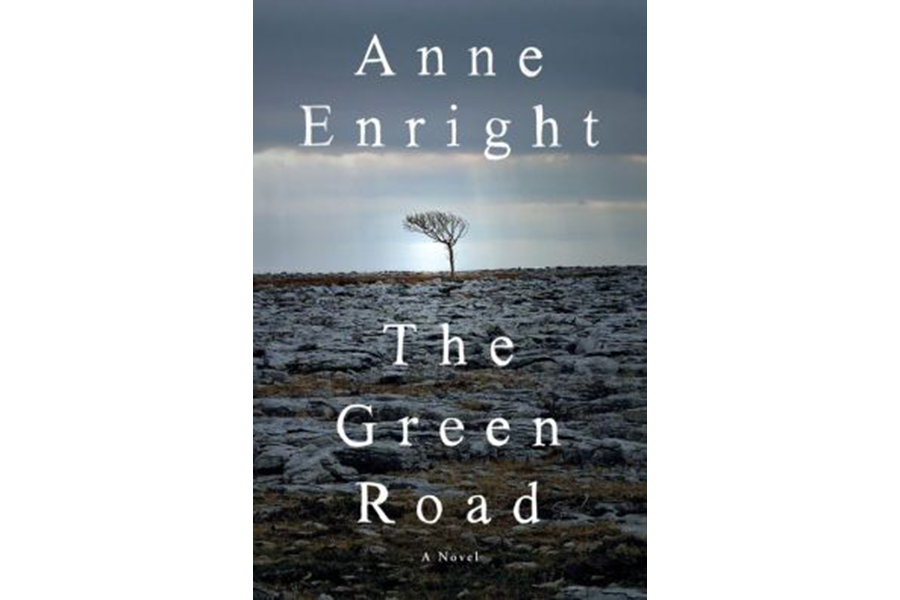'The Green Road' paints a luminous portrait of an Irish matriarch
When Festus Garvey takes to the campaign trail to oppose wily old Frank Skeffington in Edwin O’Connor’s great comic novel "The Last Hurrah," he doesn’t go alone into the dance halls and ward parlors of Skeffington’s mostly Irish-American partisans; instead, he brings the ultimate campaign weapon: his elderly Irish mother, hence his nickname “Mother” Garvey. In their unvarying stage dialogue, hapless Festus always shouts out, “You’ll always be my best gal, Ma!”
The particular tone the hapless candidate uses, the overdone devotion mixed with just a few hints of desperation, would be familiar to many an Irish family dominated by a long-suffering matriarch. There were a couple of such women among the generations of the Hegarty clan at the heart of Anne Enright's 2007 novel "The Gathering," which won the Booker Prize. But in Enright's new book, The Green Road, the type comes front and center in the person of Rosaleen Madigan.
She's the strong-willed and self-pitying force at head of the Madigan family of County Clare on the West coast of Ireland, using charm, editorial commentary, and emotional blackmail to control her four adult children. “Why she could not be nice to them, she did not know,” she reflects at one point. “She loved them so much. Sometimes she looked at them and she was so flooded with love, she just had to go and spoil it.”
Rosaleen's husband shows the courtesy of so many Irish husbands by dying almost immediately after the story begins, and the bulk of Enright's luminously readable novel deals with the lives of her four adult children. Constance stays home in Ireland, near to Rosaleen and generally thwarted and unhappy. Hanna, who “lived a mess, her life … festooned in it,” moves away to try an acting career in Dublin. Stolid Emmett (“All Emmett's arguments were one long argument,” Rosaleen shrewdly reflects) travels to Mali in West Africa, where his noble humanitarian aspirations are constantly hobbled by the fallible people all around him. And the oldest, Dan, moves to New York City in the 1990s at the height of the AIDS epidemic, where his beauty and emotional reserve (“Dan did not believe in romantic love – why should he? - it had never believed in him”) make him popular in the gay dating scene.
These four are very different adults, but they all have both the hard richness of the Green Road and the complicated love of Rosaleen in their hearts. “Oh, they all loved her now,” we learn of these fiercely individual people, “they were hopeless in it. They yearned to make her happy.”
“The Madigans lived in a house that had a little river in the garden and its own name on the gate: ARDEEVIN” – such is the problematically idyllic setting of their childhood, But at the novel's midpoint, after Enright has given readers detailed looks at the lives of Hanna, Constance, Emmett, and Dan, the bombshell drops: in the run-up to a Christmas gathering, Rosaleen announces that she's selling the family home. Her four children assemble at Ardeevin with varying degrees of reluctance and relief (Enright ironically juxtaposes the lingo from a travel brochure touting “drama, excitement and romance amid the terrible beauty of Galway's Atlantic seaboard”), and the novel plays out the tensions of their adult lives against the emotional paralysis of their mother.
It's probably not even ironic how thoroughly Rosaleen dominates the novel, although the light-fingered skill with which Enright walks us into and out of the woman's inner world is impressive (there's a simple scene of Rosaleen sitting down in her house and writing out Christmas cards to each of her children that may be the most true and lovely thing this author has ever written). But the book's real surprise is the character of Dan, who starts out aloof (“more cat than dog,” as he says of himself) but gradually deepens into the most memorable character of "The Green Road," drawn against his will to the land of his birth: “it was a secret he had carried inside him; a map of things he had known and lost, these half-glimpsed houses and stone walls, the fields of solid green.” His emotional growth is the secret heart of the book.
So quintessentially Irish a novel wouldn't be complete without a hokey bit of melodrama in the final act (even Maeve Binchy's polite middle-aged widows managed a little Celtic Sturm und Drang), and Enright duly provides. But the real dramatic focus is the awkward, somewhat stumbling world of Rosaleen Madigan, a place Hanna summarizes succinctly: ““Passions. Impossibilities. The push of it.”









